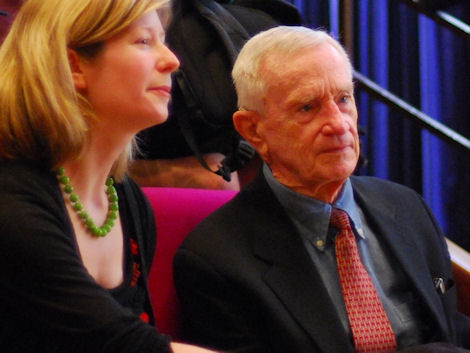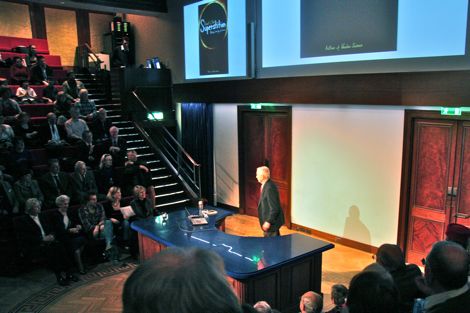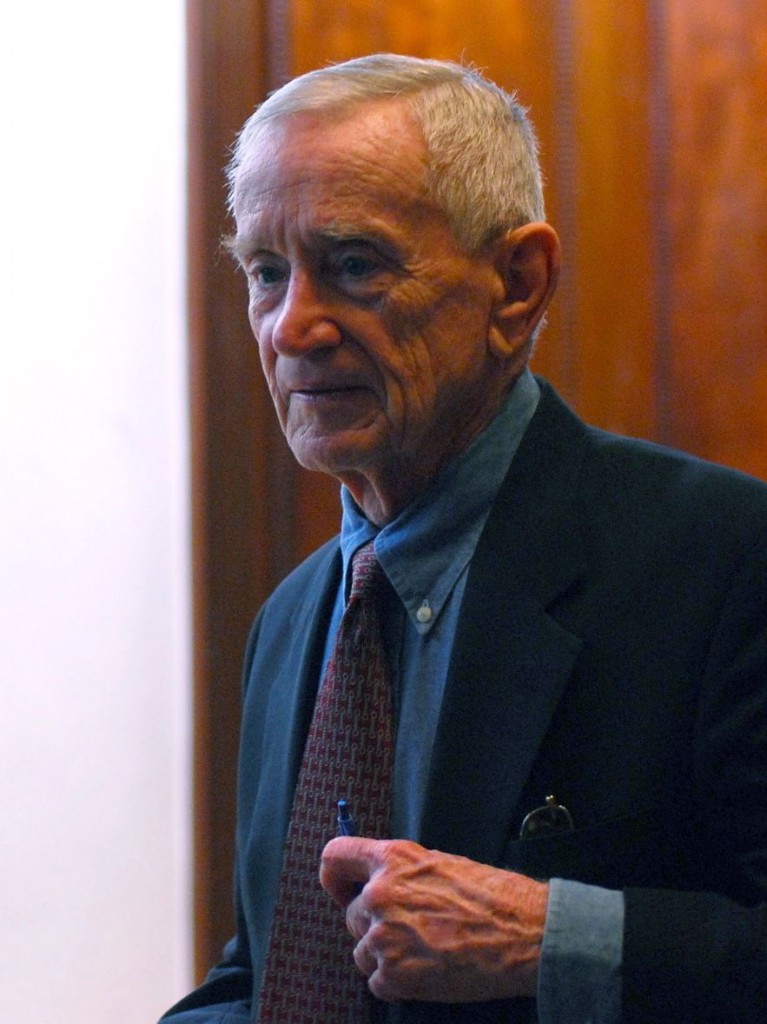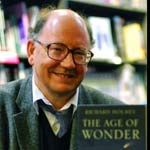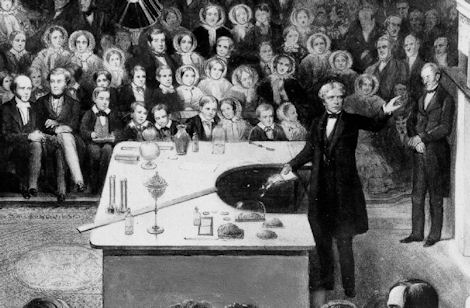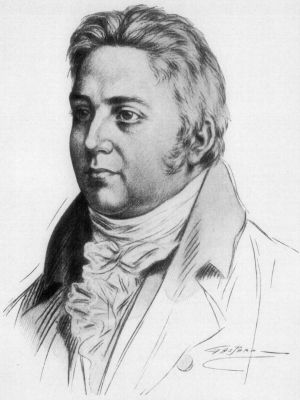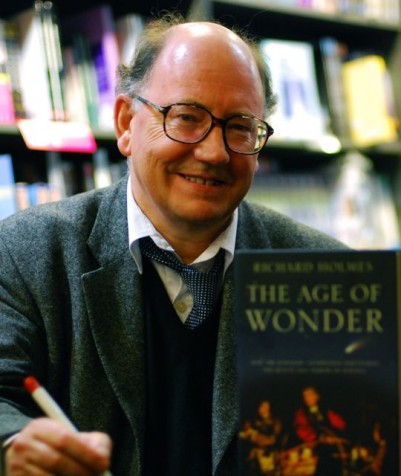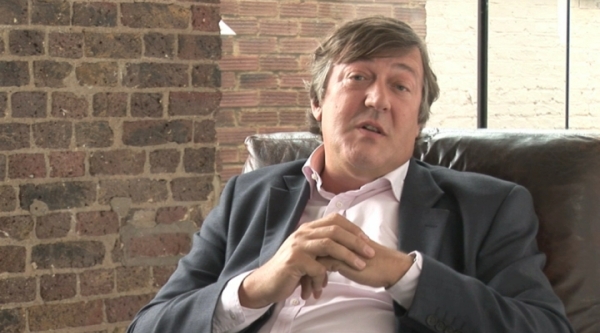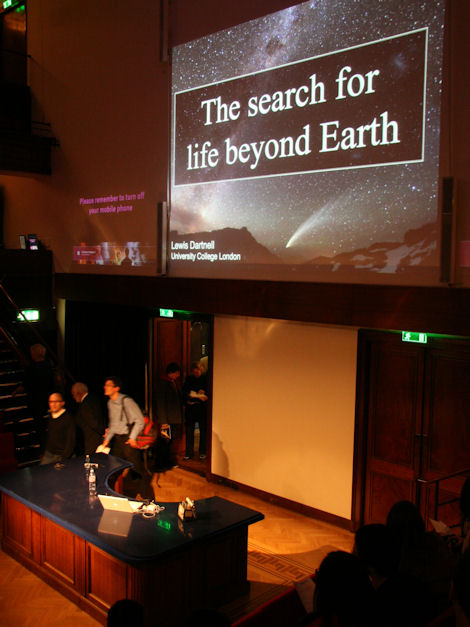
I kind of expect to see demonstrations at the Royal Institution, an association with the Christmas Lectures I guess.
So it was nice to see a few props at Lewis Dartnell’s talk on astro-biology yesterday evening: a Geiger counter, a jar of fluorescent quinine, a piece of Mars. A piece of Mars !!! That got a reaction from the audience – along with an intelligent question – “how do you know it’s from Mars?” As it happens, matching isotopes between the 1911 meteorite sample and material tested in-situ by the Viking lander on Mars leave little doubt about its origins. Whether it contains signs of former Martian life, as some claim, is another matter.
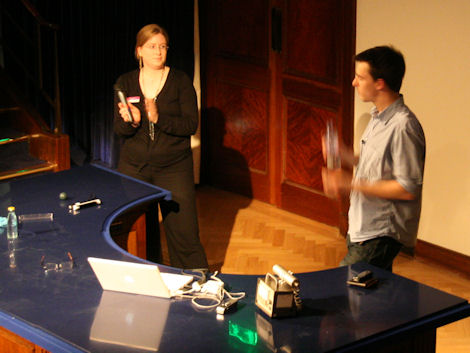
The evening’s bottom line was that no extra-terrestrial life has yet been found; but there is particular hope for Mars and/or Jupiter’s moon Europa.
Dartnell structured his lecture from the Earth outwards: Earth, solar system, galaxy, etc. With ‘Earth’ came a definition of life, and what an excuse that was to show some clips from this amazing Harvard Biovisions simulation of how a cell works; fast forward to 4:00mins for the best bit with vesicles being dragged along by ‘motor proteins’.
Moving out from the Earth, we find that the combination of salinity, pH, and temperature on which earth’s more ‘extremophile’ lifeforms thrive: thermophiles, acidophiles, psycrophiles in the lingo, are the exact same as those prevailing on Venus, Mars, and Jupiter’s moons. Further out in the galaxy, there are candidate stars with Jupiter-sized planets at the right sort of solar distance for Earth-like temperature conditions to exist at their supposed moons (HD28185 and Gliese581 were the examples given). So there’s hope. Information, metabolism, blueprint = Life.
Dartnell could see Martian material being brought back to earth for analysis at some point, but not for another ten years or so. In the meantime, the European ExoMars probe, due for launch in 2011, will drive around the surface, drilling holes and taking samples. It will also illuminate the landscape with ultraviolet light, organic molecules betraying themselves with their fluorescence.
No discussion on extra-terrestrial life is complete without some sort of Saganish ‘Billions’ illustration of how many stars – and presumably planets – there are in the universe: the implication being that we have a large sample size even if the odds are thin (which they aren’t necessarily). Lewis Dartnell showed it last night. Astronomer Stephen Warren showed it at his inaugural lecture at Imperial College tonight. This is the now iconic Hubble deep field image showing a section of sky equivalent to only 1/30th the moon’s diameter (Warren reckoned a 1mm square at the end of your arm – sounds about right). And most of the objects here are galaxies.

The insufficiently humbled can check out higher resolution versions at Hubblesite.org.
“Space is big. Really big. You just won’t believe how vastly hugely mind-bogglingly big it is. I mean, you may think it’s a long way down the road to the chemist, but that’s just peanuts to space.”
“Life, don’t talk to me about life….”
🙂
Postscript
As a quick aside. Before Lewis Dartnell kicked off, the organisers called for a show of hands of any first time visitors to the Royal Institution, and that turned out to be a fair chunk of audience; less than 50% I reckon, but a good number. With my SciCom hat on, that’s really encouraging – folk taking an interest in science and technology (and they didn’t look like the UFO squad either).
